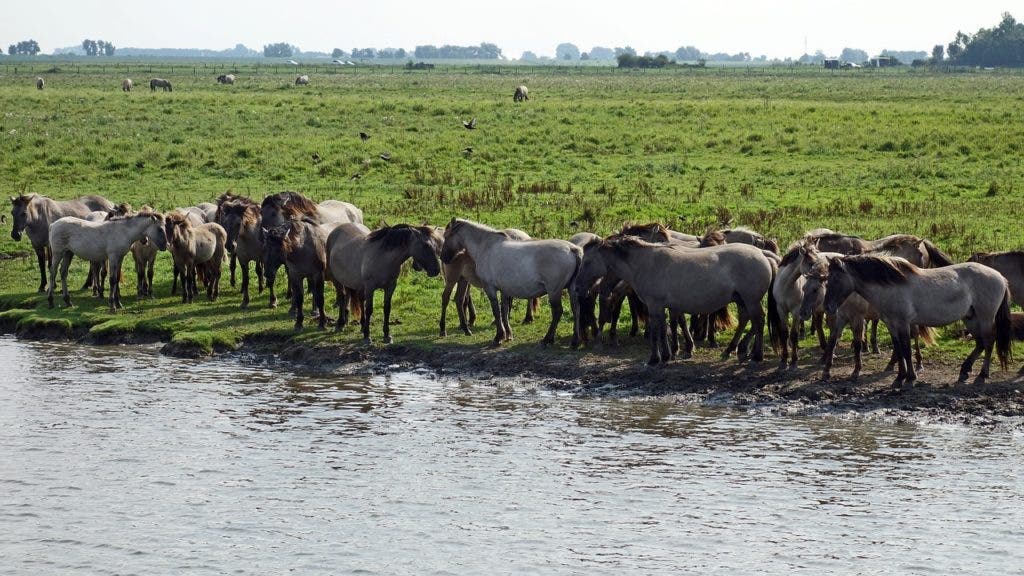The most comprehensive analysis to date of human activity within protected areas has found that the world’s most precious natural habitats are under increasing “anthropogenic pressure”.

For their study, researchers at the University of Cambridge, used satellite imagery of night lights and agricultural activity, as well as crop yields, in order to assess the impact of human encroachment in 12,315 protect areas in over 150 countries between 1995 and 2010.
In order to gauge the effectiveness of protected areas, the researchers compared them to a matching sample of unprotected land. Every satellite pixel, corresponding to 64 square kilometers of a protected area, was directly compared to a pixel of an area without a conservation status, in terms of soil type, elevation, and other important makers.
Unfortunately, the results suggest that we are not doing enough to ensure the protection of some of the world’s last bastions of biodiversity. Most protected areas in the world have suffered increases in human pressure, rather than decreases as they should have.
“Our study suggests that protected areas in more remote and wild parts of the tropics have experienced alarming increases in human pressure since 1995,” said Dr. Jonas Geldmann from the University of Cambridge Conservation Research Institute. “These places house a disproportionately high amount of the Earth’s biodiversity, and play an irreplaceable role in maintaining our most threatened species.”
Although protection in the Northern Hemisphere and Australia had, generally speaking, managed to slow down the impact of human encroachment compared to unprotected habitats, other parts of the world have experienced a marked increase in the pressure they felt.
South America, Sub-Saharan Africa, and Southeast Asia are home to some of the richest biodiversity and the poorest communities. Due to economic scarcity, human activity looking to extract and process resources in protected areas has been, on average, higher than in matched unprotected areas. The less developed the nation — as measured in terms of fewer roads and a lower rank in the Human Development Index — the higher the impact of human encroachment.
“Rapidly establishing new protected areas to meet global targets without providing sufficient investment and resourcing on the ground is unlikely to halt the unfolding extinction crisis,” said lead author Dr. Jonas Geldmann from the University of Cambridge Conservation Research Institute.

Protected areas are not only vital to conserving biodiversity, but they also perform a variety of functions important to people including microclimate control, carbon storage, soil erosion control, pollination, watershed protection, and water supply, soil formation, nutrient recycling, and inspiration and a sense of place.
Terrestrial protected areas, portions of the global landscape isolated to conserve nature, are currently estimated to occupy about 13% of the Earth’s land surface. However, protected areas currently account for about one-fifth of the carbon sequestered by all land ecosystems annually.
According to the researchers, establishing new protected areas in order to meet global emissions targets, such as the Paris Agreement, is counterproductive unless sufficient effort and investment are awarded to halt human encroachment. The study found that agriculture, in particular, is the driving force behind threats to protected areas. In Sub-Saharan grasslands, for instance, croplands inside protected areas have increased at nearly double the rate in matched unprotected areas. Pressure from agriculture in protected African mangroves increased by 13% more than in matched unprotected areas. In South America, especially outside the Amazon, agricultural pressure increased by 10% in protected areas.
“Our study shows that agriculture is the driving force behind threats to protected areas, particularity in the tropics,” said Geldmann. “Our data does not reveal the causes, but we suspect factors that play a major role include rapid population growth, lack of funding, and higher levels of corruption. Additionally, most unprotected land suitable for agriculture is already farmed.”
“We think that what we are seeing are the effects of establishing protected areas on paper, but not following through with the right funding, management and community engagement that is needed,” Geldmann said.
The findings appeared in the Proceedings of the National Academy of Sciences.









